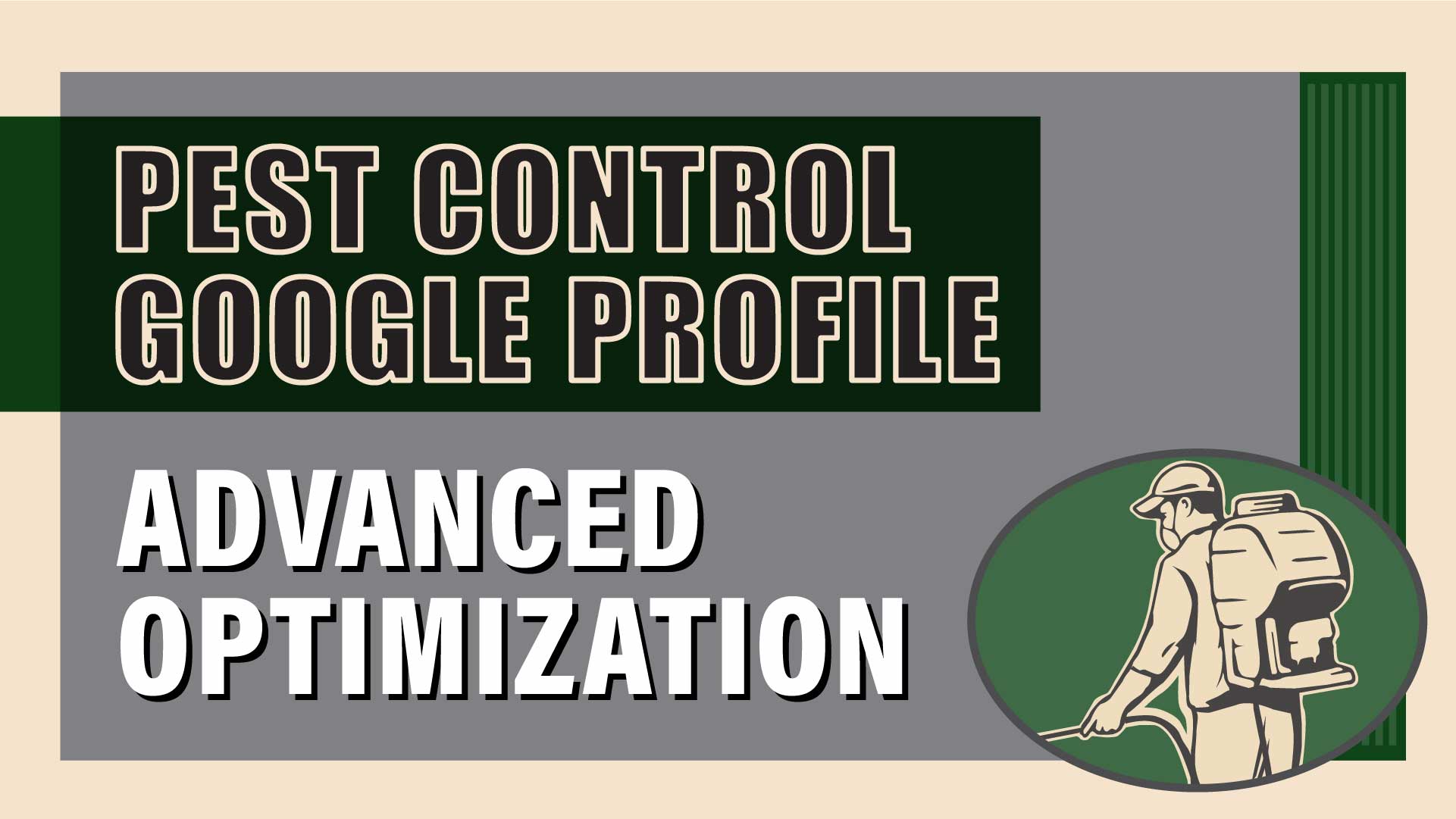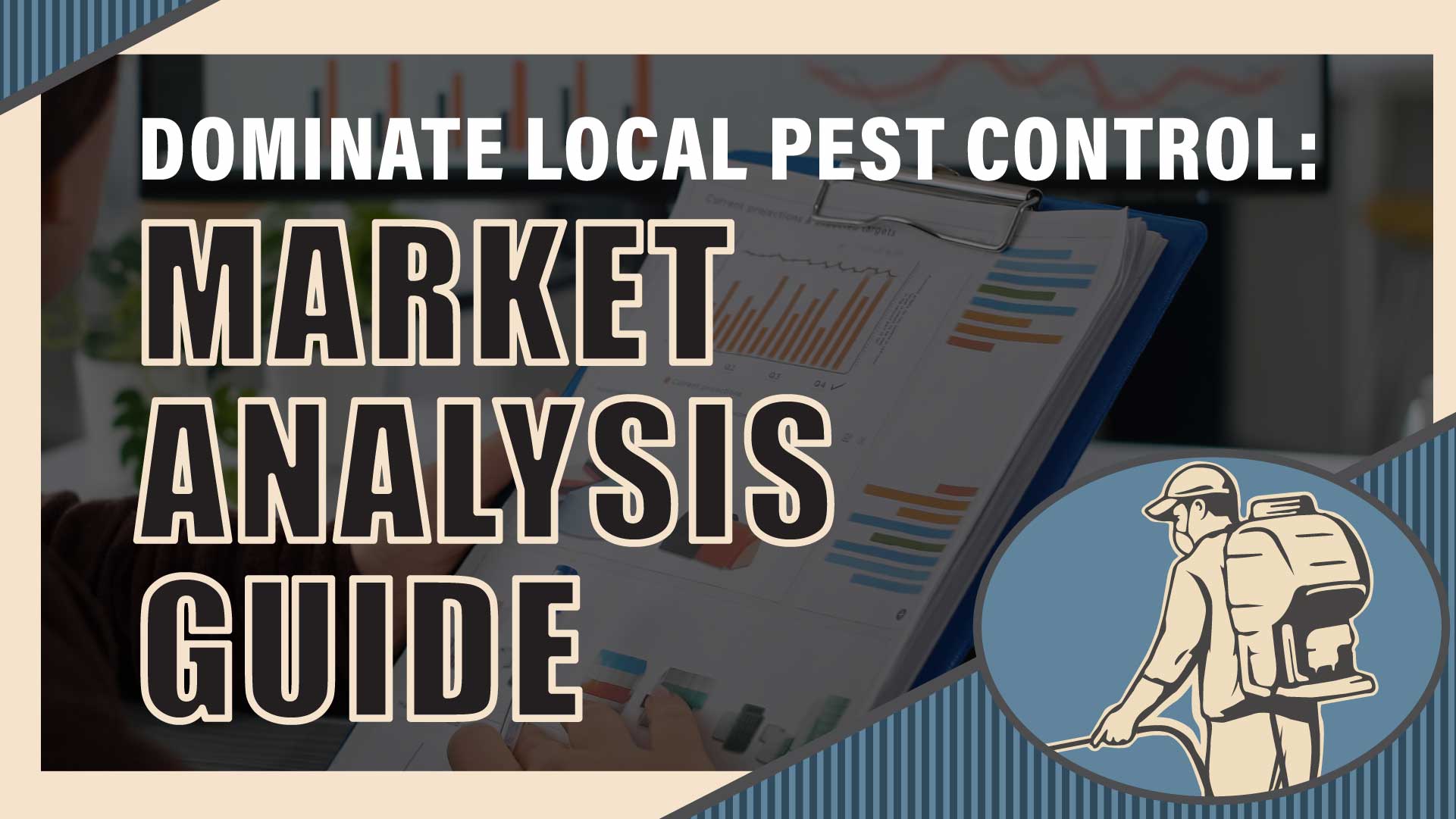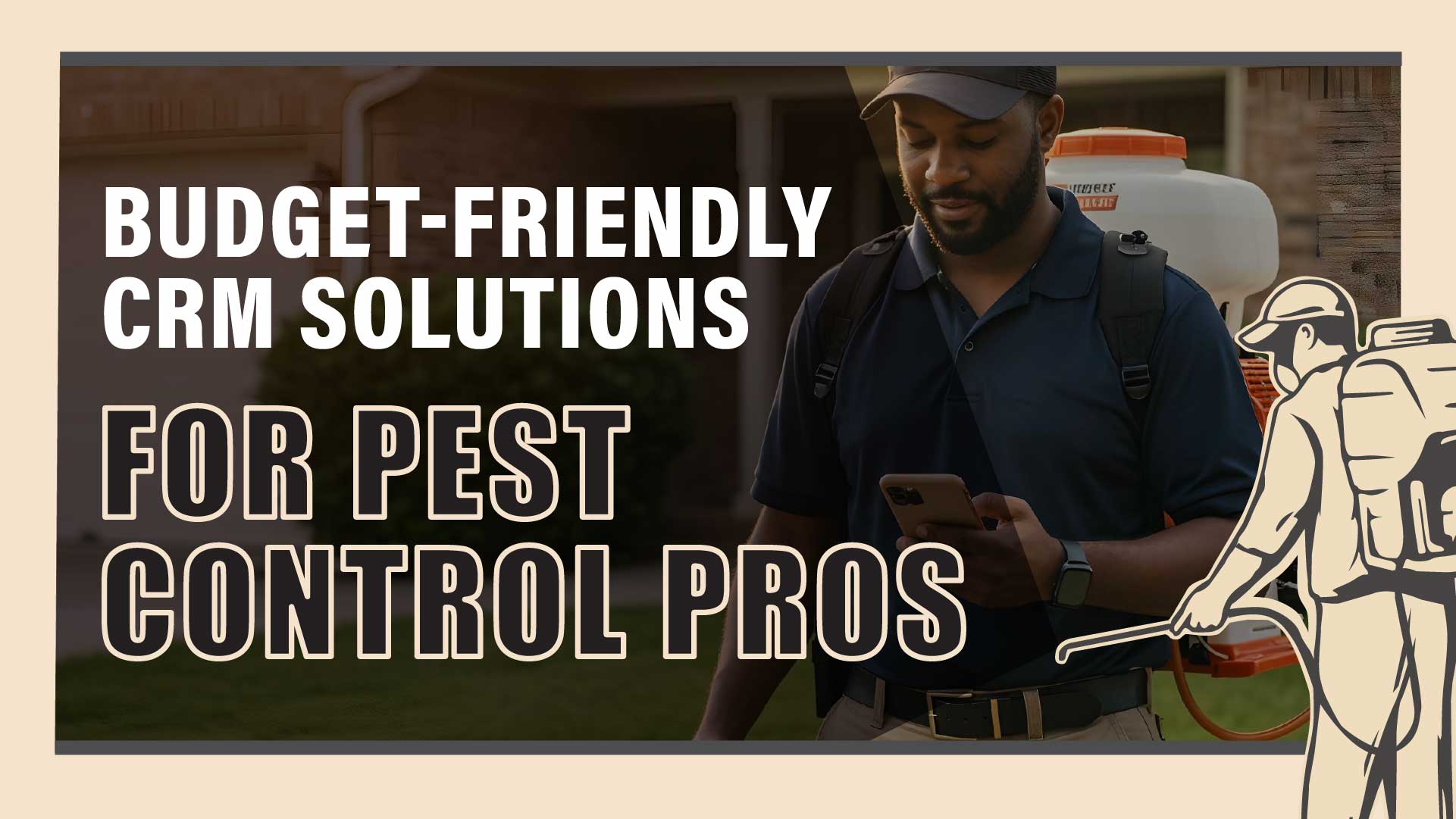As a pest control business owner or marketer, you know that a well-planned budget is critical to your success. However, many companies make the mistake of setting their budget in stone, failing to allow for adjustments along the way. In the ever-changing world of digital marketing, adaptability is key. This is especially true when it comes to your marketing budget.
Take the case of Wendy, founder and owner of Bug Off Pest Control in Charlotte. As a start-up, Wendy understood the importance of maximizing her limited marketing budget. She quickly realized that what worked one month might not work the next and that she needed to be willing to make changes on the fly.
In this blog post, we'll explore seven tips to help you optimize your pest control company's marketing budget, ensuring that every dollar spent drives real results. From setting SMART goals to embracing automation, these strategies will help you stay ahead of the competition and grow your business.
Pest Control Marketing: Top 7 Budgeting Tips and Tricks
1. Set SMART Goals for Your Pest Control Business
It’s difficult to plan anything without knowing the destination. Before you even think about touching that marketing budget, you need to define where you want to be. This is where the SMART goal framework comes in. This method, used across many business disciplines, helps define what you’re working on.
SMART goals are:
Specific (S)
Clearly defined and focused. For example, "increase website traffic" is too vague. Instead, set a goal to "increase organic website traffic by 20%."
Measurable (M)
Quantifiable to track progress. Going with the previous example, you're able to measure website visits using analytics tools like Google Analytics.
Attainable (A)
It’s important to set goals that are challenging but achievable. Otherwise, you're setting yourself up for failure and disappointment.
Relevant (R)
Goals that align with your overall business objectives. For example, "increase brand awareness" aligns with the broader business goal of getting more quality leads.
Time-Bound (T)
Give yourself a deadline. This adds a sense of urgency. A goal without a deadline is just a dream.
Here is an example using the fictional Dream Weaver Pest Control. The founder and owner, Gary learned the value of SMART goals firsthand. As an established and growing company, Gary knew he needed to set both long-term and short-term goals to guide his marketing strategy. By setting a long-term goal to increase annual revenue by 20% and a short-term goal to boost website traffic by 30% within the next quarter, Gary was able to make informed decisions about his marketing budget allocation.
For your pest control management business, your long-term goal may be to increase your annual revenue by 20%, while a shorter-term marketing budget goal is to increase your website traffic by 30% as the season ramps up. Once you have clear goals for your pest control company, deciding how to allocate your marketing dollars becomes clearer. This process helps you focus on what is important and prioritize your marketing spend.
Remember, your goals should be challenging but achievable. Setting unrealistic goals will only lead to frustration and disappointment. By using the SMART framework, you can create a roadmap for success that keeps your team motivated and on track.
2. Evaluate Your Past Marketing Efforts
Regular evaluations are like fine-tuning a machine; they keep everything running smoothly. Take a step back and look at the marketing activities from the previous year. Document what was effective, what didn't work, and areas to improve.
This step will illuminate your path forward in the coming year. As you analyze, don’t just look at whether something worked but try to understand “why” it worked. Was it the offer or the media channel you used? Was it the time of year or something else entirely?
Audit Your Pest Control Marketing Campaigns
Auditing your marketing campaigns allows you to pinpoint what’s performing well so you can double down on the winners while scrapping anything underperforming. Remember, you are in business to make money, so if something isn’t performing, it’s costing you money. The goal here is to make sure every dollar spent is effective marketing.
Keep the following in mind when doing a campaign audit.
- Key Performance Indicators (KPIs): The metrics that directly impact your bottom line are the ones you care about. Every pest control marketing campaign needs trackable KPIs that tie into your overall goals.
- Return on Investment (ROI): One of the biggest mistakes companies make is a failure to properly track this metric. ROI allows you to track your profitability. Be sure to track it for *each* campaign so you can measure one against the other.
- Cost Per Acquisition (CPA): Knowing how much it costs to get a new customer is paramount when you optimize marketing budget dollars. By knowing your cost to acquire customers from various channels, you can make adjustments over time.
Marketing audits may seem like busy work, but I’ve found this process helped us uncover simple things we could adjust to increase results, which helped us get the most out of our marketing budget. Sometimes, we would discover that one seemingly small change would dramatically impact our conversion rate.
Let's look at another example. Eden, the owner and marketer of the fictional Green Pest Elimination in Asheville, conducts an annual marketing audit. By closely examining her eco-friendly pest control company's marketing KPIs, such as ROI and CPA, Eden can pinpoint which campaigns and channels are delivering the best results. This information is invaluable when it comes to optimizing her marketing budget for the year ahead.
Remember, a marketing audit isn't just about looking at the numbers. It's also an opportunity to reflect on the qualitative aspects of your campaigns. What resonated with your audience? What fell flat? By combining quantitative data with qualitative insights, you can gain a comprehensive understanding of your marketing performance and make informed decisions about your budget allocation.
3. Track Everything and Create Customer Profiles
Imagine if a ship captain just set sail without a way to chart a course. That’s what it’s like when pest control businesses aren’t tracking results: you don’t know if you're hitting your targets. To accurately track your pest control marketing campaigns, start using tracking links. With tracking links in place, you can easily see click-through rates, how many people converted, and which channel they converted through.
Combine this data with powerful insights from your website analytics to paint a clear picture. And it’s not just about seeing how many people visited your site. Look closely at what pages they visited and how long they remained on those pages. By closely examining the behavior of your web visitors, you are gleaning data points you can use to your advantage.
Create Your Customer Profile
Having a deep understanding of who your customer is will drastically impact your marketing, allowing you to laser-focus on what's most important. You can't effectively optimize your marketing budget if you don't know who you’re aiming for. I like to think of this as a roadmap to my perfect customer — a detailed picture that allows me to effectively position my product and services.
These profiles or buyer personas contain information like age, income, job title, pain points, where they spend time online, what they read, and more. One of the easiest ways to get this data is to look closely at your existing customer base. For example, do they share common demographics, interests, or behaviors? These insights will help hone your efforts and attract more customers with those characteristics.
Here are some examples:

Buyer Persona Example: Homeowner Hannah
Demographic Information:
- Age: 35
- Location: Suburban area
- Occupation: Marketing Professional
Behavioral Traits:
- She prioritizes a healthy lifestyle for her family, seeking pest control methods that don’t compromise their well-being.
- She values environmentally friendly pest control solutions.
- She regularly seeks information online before making decisions.
- Being a marketing professional, she’s likely comfortable with digital platforms and may prefer pest control services with user-friendly online interfaces.
Pain Points:
- She is concerned about the online reputation of the pest control service she chooses.
- She has experienced pest issues in the past and desires a long-term solution.
- She may worry about the health, comfort, and well-being of her children and pets and, ultimately, the environmental impact of the pest control methods used.
- She has experienced pest issues in the past and desires a long-term solution to prevent recurring issues.

Buyer Persona Example: Suburban Business Owner Sam
Demographic Information:
- Age: 45
- Location: Suburban area
- Occupation: Small business owner (restaurant)
Behavioral Traits:
- He approaches decisions pragmatically, valuing solutions that contribute to the success of his restaurant.
- Compliance with health regulations is crucial, and he may prefer pest control services that help maintain a hygienic environment.
Pain Points:
- He is concerned about any disruptions to his business operations caused by pest issues and the subsequent need for closure or loss of customers.
- He is mindful of the cost-effectiveness of the pest control services.
- He desires a reliable pest control partner for long-term business success.

Buyer Persona Example: Property Manager Paula
Demographic Information:
- Age: 45
- Location: Urban area
- Occupation: Property Manager
Behavioral Traits:
- She values efficiency and quick resolution of issues. She may prefer pest control services that offer prompt responses and practical solutions to minimize disruptions for tenants.
- She is very price-sensitive and seeks pest control services that offer value for money, providing effective solutions without excessive costs.
- She prioritizes companies with a proven track record of reliability and consistent service quality.
- She also appreciates proactive maintenance plans, regular inspections, and preventive measures.
Pain Points:
- She finds it challenging to manage tenant satisfaction and address pest problems promptly to maintain a positive living environment.
- Pest infestations can lead to property damage, affecting the overall condition of the buildings. Repairing and restoring damaged areas can be both time-consuming and costly for her.
- She is concerned about the potential spread of diseases or allergic reactions, necessitating a swift and effective pest control response to ensure the well-being of residents.
- She faces challenges in ensuring pest control measures meet compliance requirements, potentially leading to legal and regulatory issues.
- Negative reviews or word-of-mouth complaints about pest issues may impact the attractiveness of the properties to potential tenants, which is an additional major concern.
- Worries about tenant turnover and increased vacancy rates mean maintaining high occupancy levels can’t happen if pest problems drive tenants away.

Buyer Persona Example: Eco-Conscious Emily and John
Demographic Information:
- Age: 28
- Location: Rural Area
- Occupation: Environmentalist
Behavioral Traits:
- She and her husband are passionate about environmental causes, advocating for sustainable and eco-friendly practices in various aspects.
- She may meticulously research products and services, ensuring they align with their eco-conscious values.
- They actively engage with their local community to promote environmental awareness and appreciate businesses that contribute positively to the community and the environment.
- Eco-conscious individuals often have a do-it-yourself (DIY) mindset. Therefore, they may have tried exploring natural or DIY pest control solutions before seeking professional services.
Pain Points:
- She is concerned about using harmful chemicals in traditional pest control methods, with a primary worry that it might potentially negatively impact the environment and her health.
- Measures that align with their sustainable practices and have minimal environmental impact are crucial for them.
- Preserving biodiversity and ensuring the well-being of non-target species are significant considerations.
- Offering sustainable and lasting solutions, rather than temporary measures, would resonate with the couple.
Compiling data on current customers can further guide defining additional personas. The more precisely you can exemplify your target audience, the better.
Tools for Tracking Results
Tracking the results of your marketing campaigns is essential for optimizing your budget. By using tools like Google Analytics, on-page tracking tools, and tracking links, you can gain valuable insights into how your campaigns are performing and make data-driven decisions about where to invest your marketing dollars.
4. How to Optimize Marketing Budget Allocation for Pest Control
Many businesses fail to set a budget and quickly end up overspending because there’s no defined limit to their ad spend. Without a financial roadmap for your digital marketing budget, how will you reach those carefully planned SMART goals you created earlier? To help define your budget, consider your pest control business goals and see which ones can benefit from strategic marketing.
Next, list the channels you intend to leverage to determine associated costs. It's much easier to plan your spending when you're working with realistic numbers and estimates. For example, will you need to allocate funds for influencer marketing, and if so, how much? Or are you going to focus your budget more on content marketing?
Invest in Marketing Tools to Enhance Efficiency
To truly optimize your marketing budget efforts, consider leveraging marketing tools. These digital workhorses are a force multiplier when it comes to analyzing data and even content creation. Look closely at areas of your marketing and sales processes you can automate. This is especially true if your marketing team is small and they are wearing multiple hats. A marketing automation tool can help your team get more done, freeing up time to focus on the strategic aspects of marketing.
A tool like Google Analytics offers a treasure trove of insight, like visitor behavior on your website and how they arrived at your site. There are also specialized tools to help with SEO. For example, you could leverage SEO tools to help identify negative keywords and maximize ad spend. Before investing in any tool, carefully research your options, look at competitors and ask colleagues what they’re using. Many SaaS tools integrate together, giving you expanded functionality within your marketing technology stack.
5. Choosing Your Marketing Channels Wisely
If you’re just starting out in business, it may be tempting to use as many channels as possible; after all, your goal is to reach as many people as you can. But if your early-stage budget can’t support testing and measuring across various channels, you won't know which efforts had the biggest impact on your results. Start by analyzing the channels your competitors are in, and why they are using them.
Don’t just blindly follow them. Some pest control businesses have bigger budgets and can sustain testing across multiple channels. Be realistic in your approach and choose channels your budget and time can handle while accurately measuring them against your KPIs. Consider learning more about how much an e-commerce company should budget for paid social to avoid any potentially costly mistakes. I suggest you start with one channel first, master it, and then expand from there. This approach is a much better strategy, as you’re setting your business up for a higher probability of success.
6. Embrace Automation and Stay Ahead of the Competition
In today's fast-paced digital landscape, automation is essential for maximizing your marketing budget's efficiency. Automating repetitive tasks like email marketing, social media posting, and reporting can free up valuable time and resources to focus on higher-level strategic initiatives.
7. Collaborate with a Pest Control Marketing Agency
Partnering with a specialized pest control marketing agency can be a game-changer when it comes to optimizing your marketing budget. These agencies bring a wealth of industry-specific expertise and resources to the table, allowing you to achieve better results in less time.
When choosing a marketing agency, look for one that has a proven track record of success in the pest control industry. They should take the time to understand your unique business goals and challenges and develop a customized strategy that aligns with your budget and objectives. With the right agency partner by your side, you can optimize your marketing spend and achieve sustainable growth for your pest control company.
Final Thoughts
Optimizing your pest control company's marketing budget is an ongoing process that requires continuous testing, tweaking, and adaptation. By setting SMART goals, evaluating past efforts, tracking results, creating customer profiles, collaborating with a marketing agency, and embracing automation, you can maximize the impact of every marketing dollar spent.
Remember, what works for one company may not work for another. It's essential to stay attuned to your unique business needs and market conditions and be willing to pivot your strategy as needed. By staying agile and data-driven, you can optimize your marketing budget and achieve long-term success for your pest control company.
If you need help optimizing your marketing budget or developing a comprehensive digital marketing strategy, don't hesitate to contact me. Our team of pest control marketing experts is here to help you maximize your ROI and achieve your business goals. Contact us today to schedule a consultation and take the first step towards unlocking your company's full growth potential.






